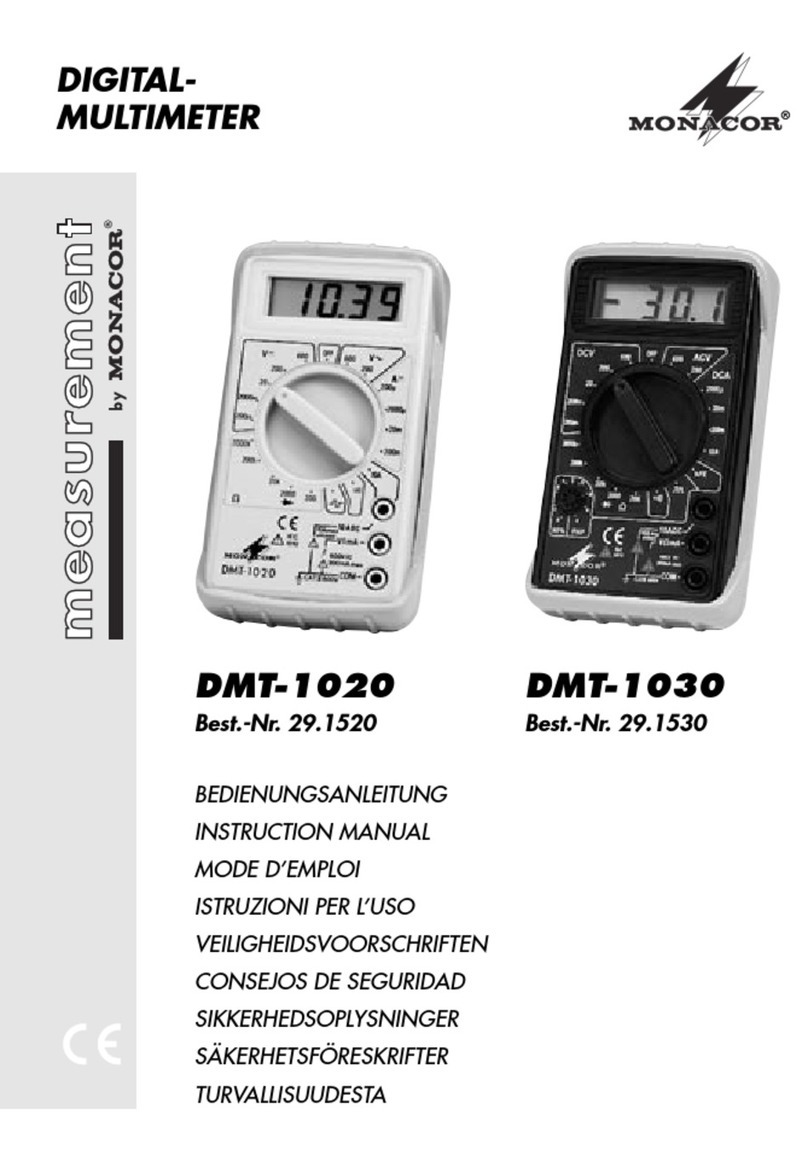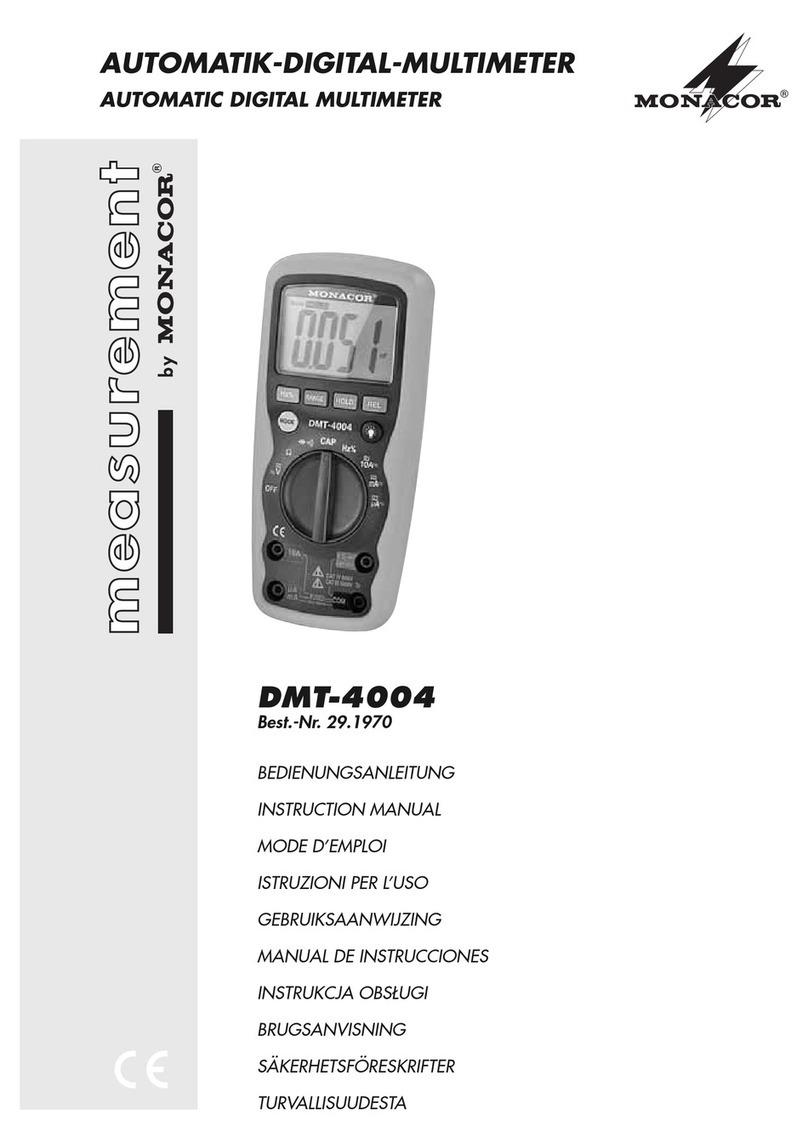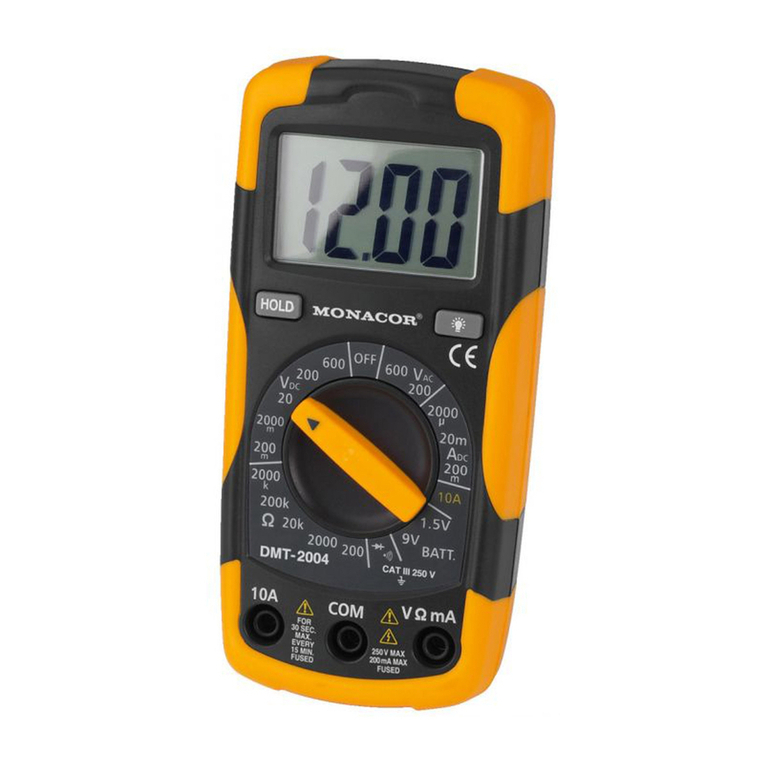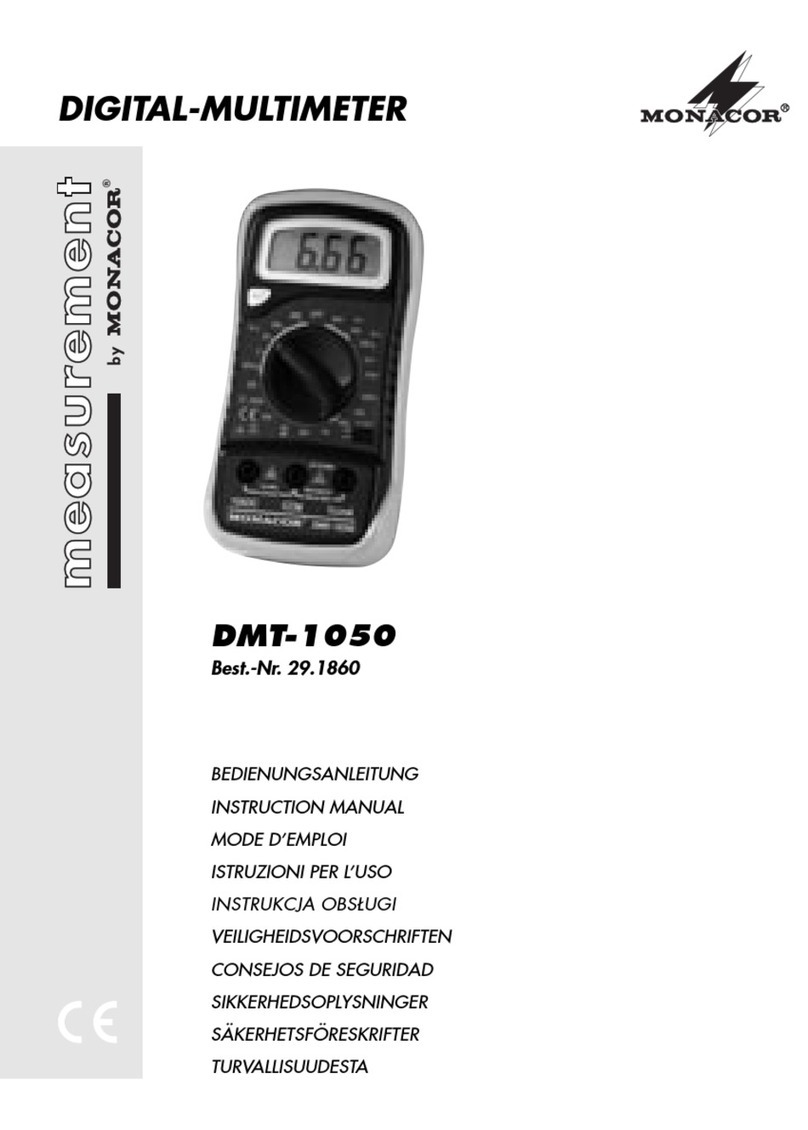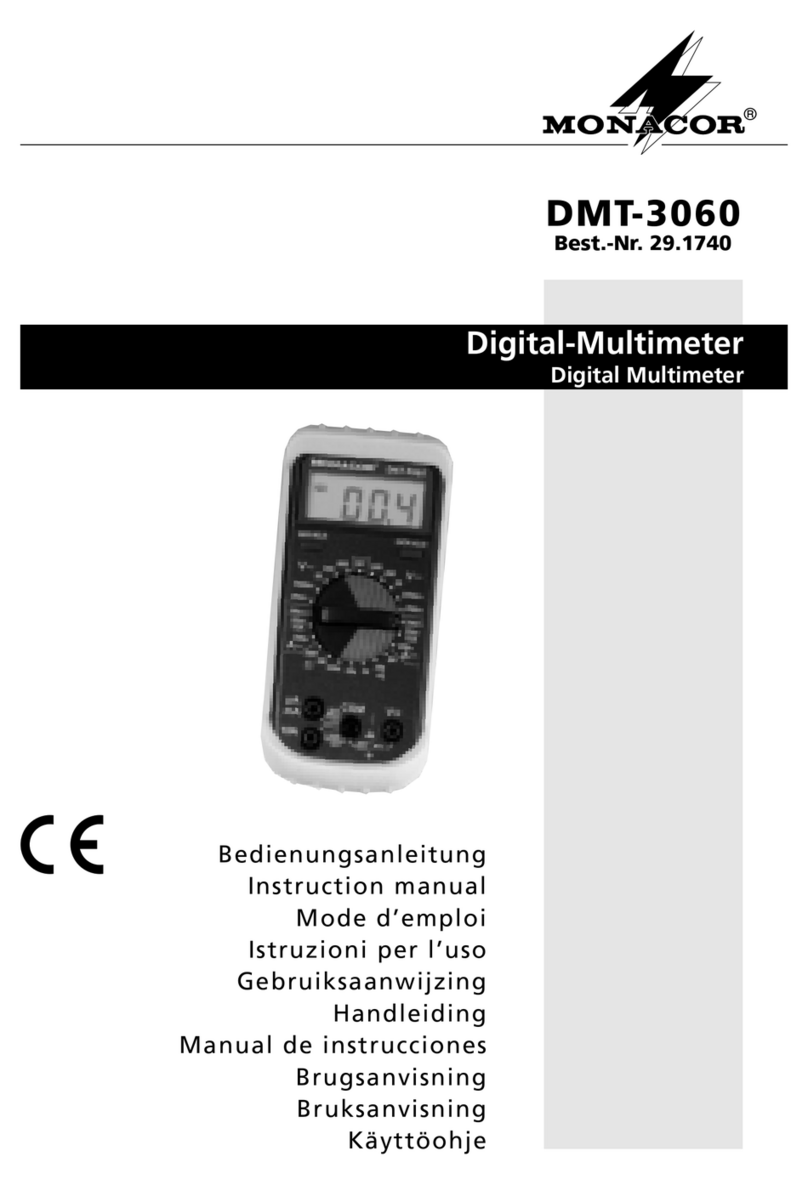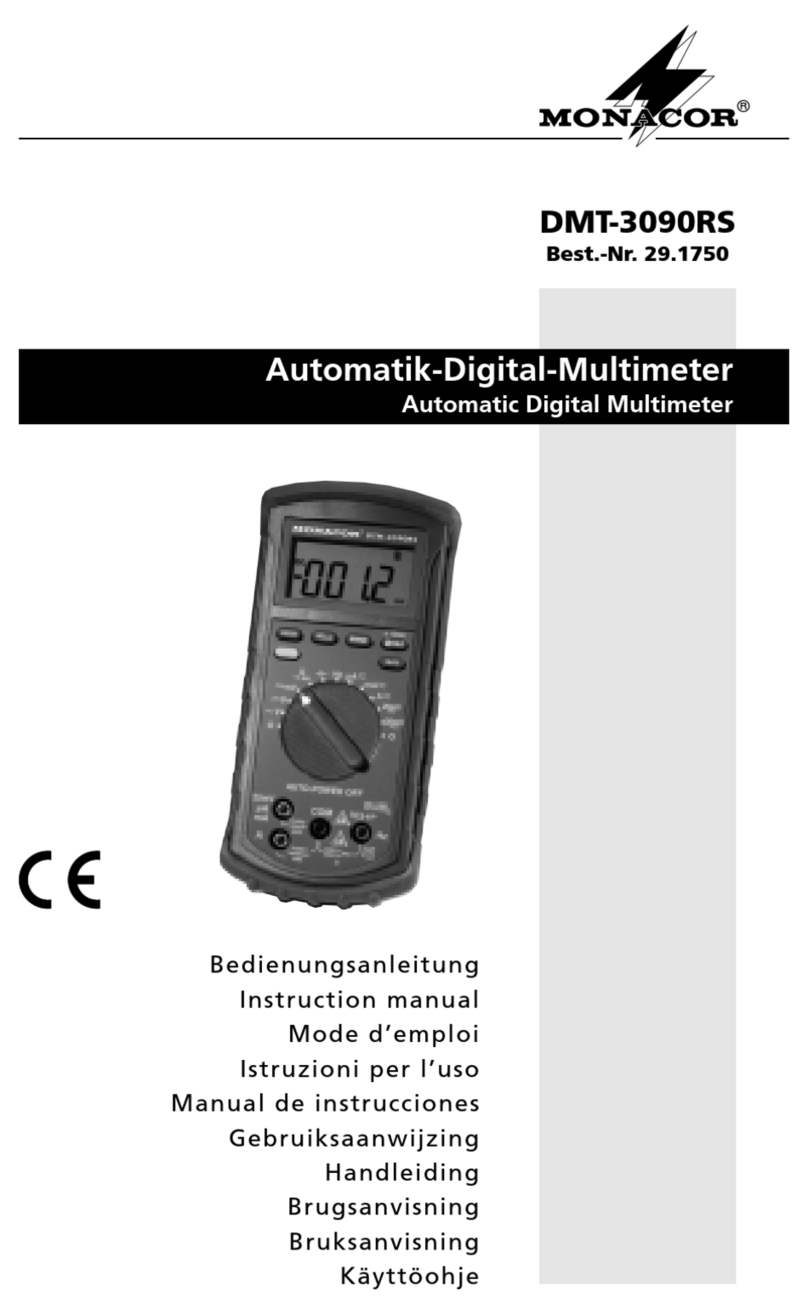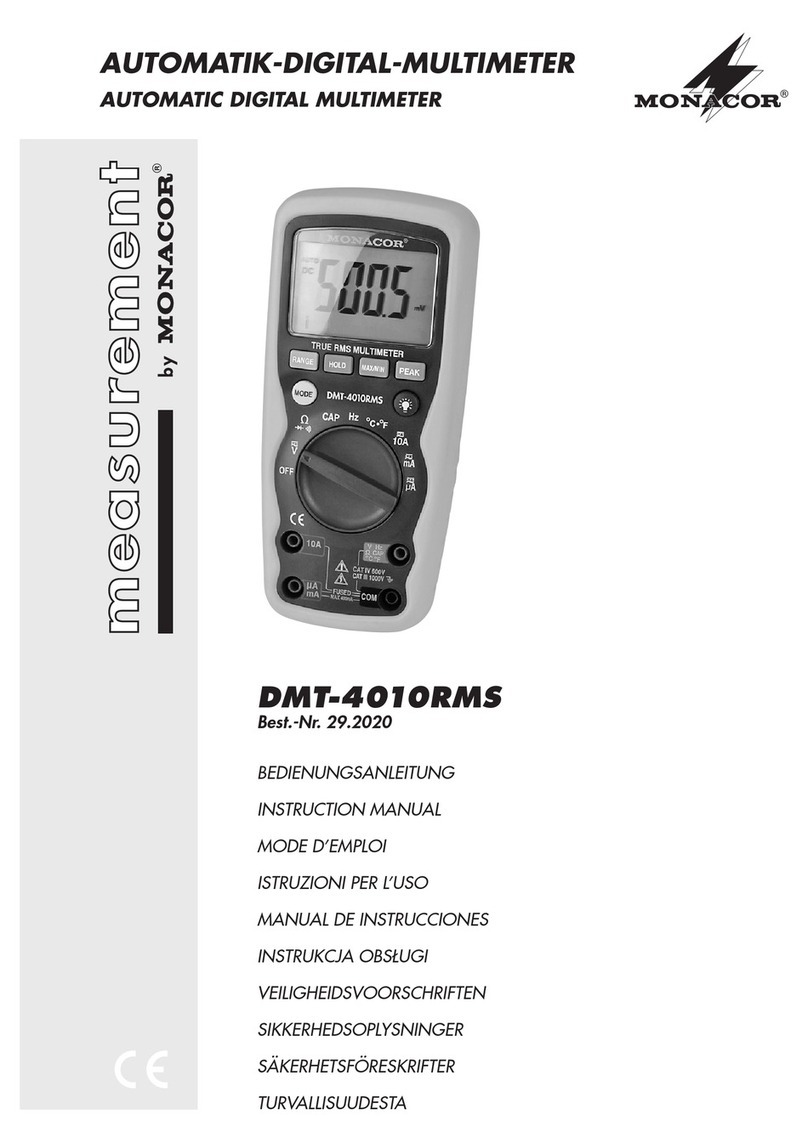D
A
CH
7
5.1 Spannungsmessung
●Bei Messungen ab 42V besonders sorg-
fältig vorgehen. Auf keinen Fall das Meß-
objekt oder die Meßspitzen berühren.
●Die maximal zu messende Spannung darf
1000V oder 750V~ nicht überschreiten.
Andernfalls besteht für den Benutzer
Lebensgefahr!
1) Die rote Meßleitung muß an der Buchse
„VΩmA“ (5) angeschlossen sein.Auf keinen
Fall versehentlich die Buchse „10ADC“ (4)
verwenden! Das Meßgerät und die Span-
nungsquelle können beschädigt werden.
2) Bei Wechselspannungen den Bereichs-
schalter (2) in einen der Bereiche „V~“ stel-
len, bei Gleichspannungen in einen der
Bereiche „V “. In den Bereichen 1000V
und 750V~ signalisiert das Display „HV“
(High Voltage– hohe Spannung).
3) Die Meßspitzen an das Meßobjekt halten,
und auf dem Display den Meßwert ablesen.
4) Liegt bei Gleichspannungsmessungen an
der roten Meßspitze der Minuspol und an
der schwarzen Meßspitze der Pluspol,
erscheint im Display vor dem Meßwert ein
Minuszeichen.
5.2 Gleichstrommessung
●Der maximal zu messende Gleichstrom
darf 10A nicht überschreiten.
●Der 10-A-Meßstromkreis ist nicht abgesi-
chert. Hier ist besondere Vorsicht geboten.
●Steht der Bereichsschalter (2) auf einem
Gleichstrombereich, auf keinen Fall eine
Spannung auf das Meßgerät geben. Das
Meßgerät und die Spannungsquelle kön-
nen beschädigt werden.
